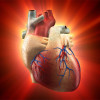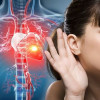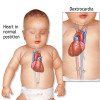
 IJCP Editorial Team
IJCP Editorial Team
Amyloidosis - Symptoms and Causes- Medtalks
Amyloidosis
Amyloidosis is a set of diseases in which a misfolded protein called amyloid accumulates in the body. Amyloid accumulation can potentially cause organ damage and failure. Amyloid deposits can form in the following organs:
Spleen
Liver
Kidney
Nerves
Heart
Blood vessels
Amyloid may build up in your body at times. This is referred to as systemic amyloidosis. It is basically extracellular deposits, causing structural and functional damage.
Different Forms of Amyloid Protein
Although all amyloids have the same morphology and staining properties, amyloidosis is not a single illness. It is a collection of disorders that share the deposition of similar-looking proteins but differ in molecular structure (more than 20 distinct proteins) and process of production.
Physical Characteristics of Amyloid Protein
Amyloid is made up of non branching fibrils 7–10 nm in diameter.
Each fibril is made up of beta pleated sheet polypeptide chains that are coiled around one another.
Congo red dye binds to these fibrils, resulting in characteristic apple-green birefringence (dichroism).
Factors Attributing to Amyloidosis
In general, amyloidosis is caused by an amyloid accumulation in your organs. The organs or parts of the body that are affected are determined by the type of amyloid deposits you have. Some varieties of amyloidosis are inherited, while others can be caused by:
Chronic disease
Inflammatory illnesses
Signs & Symptoms of Amyloidosis
Amyloidosis may not create symptoms in its early stages. When it worsens, the symptoms you experience will be determined by the type of amyloidosis you have and the organ or organs that are affected.
For instance, if your heart is damaged, you may experience:
Difficulty in breathing
Tachycardia
Irregular breathing
Chest discomfort
Low blood pressure, which may induce dizziness
If your kidneys are damaged, you may suffer swelling in your legs as a result of fluid buildup (edema) or foamy urine as a result of excess protein. If your liver is damaged, you may have discomfort and swelling in your upper abdomen.
If your gastrointestinal tract is compromised, you may experience:
Nausea
Diarrhea
Constipation
Lack of appetite
You may encounter the following symptoms if your nerves are affected:
Lower leg discomfort
Numbness
Tingling sensation
Standing up causes dizziness
Nausea
Diarrhea
Insensitivity to cold or heat
The following are some general symptoms that may occur:
Fatigue
Bruises on your skin or around your eyes
Swollen tongue
Joint discomfort
Carpal tunnel syndrome, often causes numbness and tingling in the hands and thumbs
Types of Amyloidosis
Each variety of amyloidosis requires a somewhat different therapy, so it is critical to obtain an accurate diagnosis. About 95% of the amyloid consists of fibril proteins and the rest 5% contains proteoglycans, serum amyloid P, glycosaminoglycans etc.
Light Chain Amyloidosis (AL)
One of the most prevalent kinds of amyloidosis identified is AL amyloidosis, also known as immunoglobulin light chain amyloidosis. It is referred to as primary amyloidosis.
AL amyloidosis arises when aberrant amyloid proteins known as light chains accumulate in organs such as your:
Heart
Kidney
Liver
Skin
Autoimmune Amyloidosis (AA)
This kind of amyloidosis can develop following a prolonged infection, such as TB, or an inflammatory condition, such as rheumatoid arthritis or inflammatory bowel disease. Rheumatoid arthritis affects almost half of those with AA amyloidosis. The kidneys are the most affected by AA amyloidosis. It can potentially harm your intestines, liver, or heart. This condition was formerly known as secondary amyloidosis.
Beta-2 Microglobulin Amyloidosis (Abeta2m)
This type of amyloidosis affects patients who have been on dialysis for a long time due to renal difficulties. Amyloid builds up in joints and tendons, causing discomfort and stiffness.
ATTR Amyloidosis
A mutation in a gene that runs in families causes this rare type of familial amyloidosis. Hereditary amyloidosis can affect the:
Liver
Kidney
Heart
Localized Amyloidosis (ALoc)
There are several forms of localised amyloidosis. ALoc amyloidosis often causes amyloid deposits in the trachea or bronchus, eye, or bladder. They can, however, be linked to endocrine proteins or proteins generated in the skin and heart.
Wild-type ATTR
Wild-type ATTR is usually seen in men over the age of 75, and is related to the ageing process. The heart is the most commonly affected organ by wild-type ATTR, and carpal tunnel syndrome is one of the earliest indications of this illness.
Risk Factors for Amyloidosis
Although amyloidosis may affect anybody, several variables can raise your risk, like:
Age: The most prevalent kind of amyloidosis, AL amyloidosis, is usually diagnosed in people over the age of 50.
Gender: Despite the fact that this illness is thought to affect both men and women equally, 60% of persons referred to amyloid clinics are men.
Race: African Americans are more likely than other races to get hereditary amyloidosis.
Hereditary: Hereditary amyloidosis is passed down via families.
Medical background: A prolonged infection or inflammatory condition might increase your risk of developing AA amyloidosis.
Renal Failure: You may be at greater risk if your kidneys are damaged and you require dialysis. Dialysis may not be as successful as your own kidneys in removing large proteins from your blood.
Diagnosis of Amyloidosis
Urine and blood testing: These assays can be used to determine the amounts of amyloid protein. Thyroid and liver function can also be checked using blood testing.
Echocardiogram: Sound waves are used in this imaging exam to produce images of your heart.
Biopsy: A doctor takes a sample of tissue from your liver, nerves, kidneys, heart, belly fat, or other organs for this test. Analyzing the tissue sample might assist your doctor in determining the sort of amyloid deposit you have.
Aspiration and biopsy of bone marrow: A needle is used to withdraw a little quantity of fluid from inside your bones during bone marrow aspiration. A bone marrow biopsy involves the removal of tissue from within your bone. These tests can be performed concurrently or independently.
The Bottom Line
Amyloidosis refers to a group of disorders induced by an amyloid protein accumulation. Some of these illnesses are inherited, while others are the result of persistent infection or autoimmune disorders. Amyloidosis is not curable, however, it can be controlled with medication in many cases. Discuss your treatment choices with your doctor, and work with them if you discover that your present treatment plan isn't working. They can make changes to help minimize your symptoms and enhance your quality of life as required.
References:

IJCP Editorial Team
Comprising seasoned professionals and experts from the medical field, the IJCP editorial team is dedicated to delivering timely and accurate content and thriving to provide attention-grabbing information for the readers. What sets them apart are their diverse expertise, spanning academia, research, and clinical practice, and their dedication to upholding the highest standards of quality and integrity. With a wealth of experience and a commitment to excellence, the IJCP editorial team strives to provide valuable perspectives, the latest trends, and in-depth analyses across various medical domains, all in a way that keeps you interested and engaged.




















Please login to comment on this article